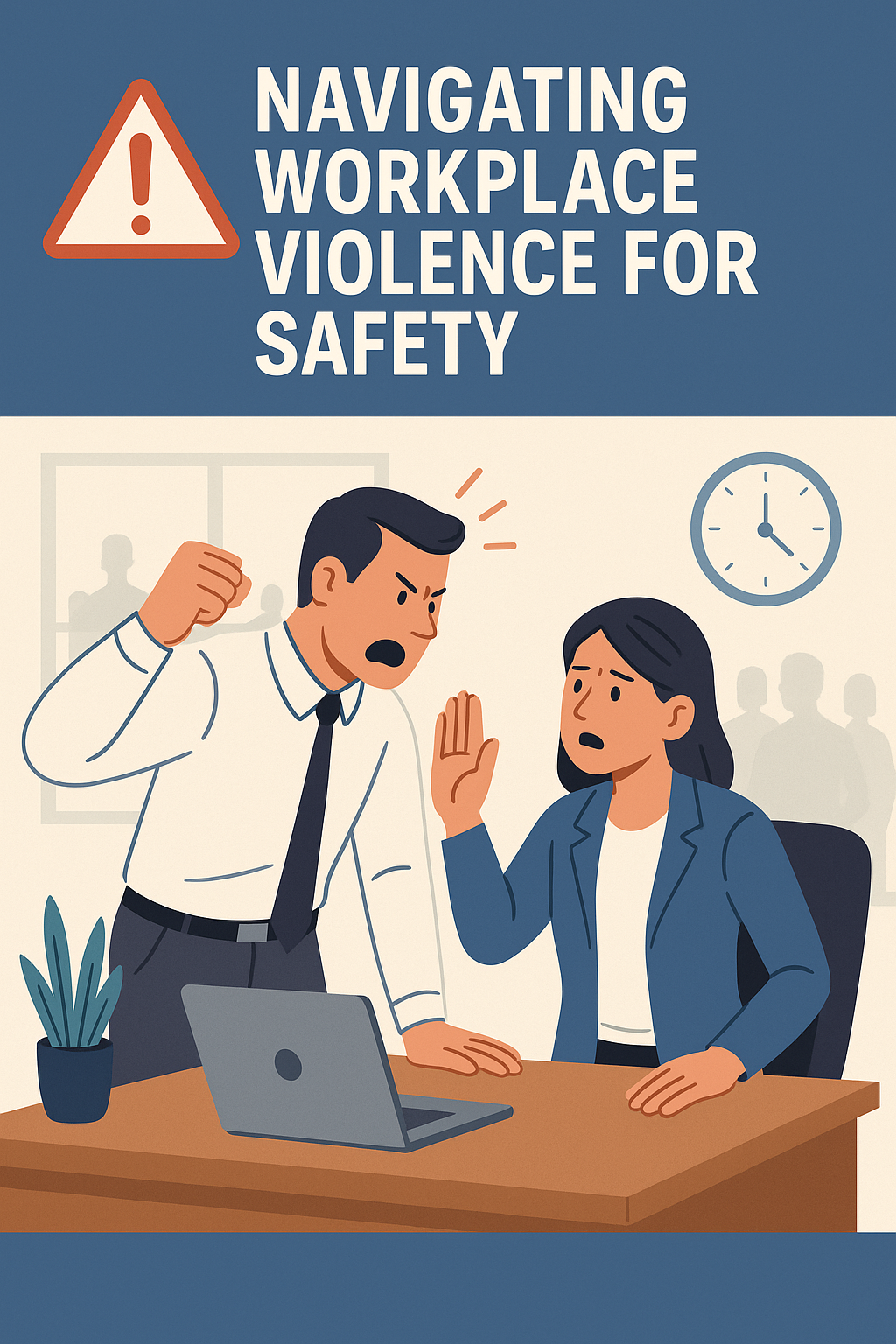Navigating Workplace Violence for Safety

🚨 Introduction
Workplace violence safety is no longer just a concern for high-risk jobs—it’s a reality across all industries. From verbal threats to physical attacks, violence at work can happen anywhere. Recognizing early signs, knowing how to respond, and taking preventive steps are essential to protect yourself and your team.
❓ What Is Workplace Violence?
Workplace violence includes:
-
Verbal abuse or threats
-
Harassment or bullying
-
Physical assault
-
Active shooter situations
-
Property damage or intimidation
According to the Occupational Safety and Health Administration (OSHA), nearly 2 million U.S. workers report being victims of workplace violence each year.
🔍 Why Workplace Violence Safety Matters
Violence in the workplace can:
-
Harm mental and physical health
-
Lower productivity and morale
-
Increase absenteeism and turnover
-
Cause reputational and legal risks
Learning proper workplace violence safety strategies can save lives and protect your peace of mind.
🚧 Common Causes of Workplace Violence
-
Stressful work environment
-
Poor communication or unresolved conflicts
-
Lack of clear security policies
-
Customer dissatisfaction or mental health issues
-
Domestic issues spilling into work
🛡️ 10 Workplace Violence Safety Tips
1. Recognize Warning Signs
Watch for behaviors like:
-
Sudden mood changes
-
Aggressive or controlling behavior
-
Excessive complaints or grievances
-
Verbal abuse or threats
2. Promote Open Communication
Create a culture where employees feel safe reporting uncomfortable situations—early reporting can prevent escalation.
3. Limit Public Access
Use secure entrances, badge systems, and visitor logs to control who enters your workplace.
4. Train Employees on Safety Protocols
Conduct regular training on conflict de-escalation, lockdown drills, and how to report incidents anonymously.
5. Have a Clear Workplace Violence Policy
Ensure everyone understands:
-
What behaviors are unacceptable
-
How to report incidents
-
What actions the company will take
6. Encourage Use of Personal Safety Tools
Employees can carry self-defense keychains, personal alarms, or pepper spray for added protection.
➡️ Check our collection of Workplace Self-Defense Tools
7. Improve Workplace Layout
Arrange desks and equipment to avoid entrapment and ensure escape routes are always accessible.
8. Monitor High-Risk Areas
Lobbies, parking lots, and stairwells are often less supervised. Install CCTV and increase patrols if needed.
9. Support Mental Health Initiatives
Offer employee assistance programs (EAPs), therapy access, and mental health days to reduce emotional buildup.
10. Know Emergency Contacts and Codes
All employees should know:
-
Emergency exits
-
Security contacts
-
Local emergency numbers (U.S. — 911, Pakistan — 15)
💬 What to Do If You Witness or Experience Violence
-
Stay calm and do not retaliate
-
Leave the area safely if possible
-
Alert security or dial emergency services
-
File an official report as soon as you can
-
Follow up with HR or workplace safety officer
✅ Conclusion
Workplace violence safety is everyone’s responsibility. Whether you’re an employer, manager, or employee, learning to spot danger early and respond appropriately can save lives. Stay alert, speak up, and be prepared—your safety is worth it.
